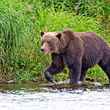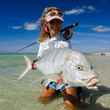The popularity of tenkara has given anglers an opportunity to chose from a variety of rods. In fact, at last count, there were more than a dozen U.S. based companies selling tenkara rods. Having that many options can make things confusing.
Folks just starting their tenkara journey may find this many choices intimidating and be concerned about the research required in making a sound rod purchasing decision. Those who have taken up tenkara, used to just a few options, now face unfamiliar names and performance characteristics.
I asked a few of my favorite tenkara groups, “If you had to pick your favorite rod -just one- what would it be and most importantly why?” I asked because I wanted to learn what characteristics make a favorite.
Whether you are new to tenkara or an old hand, the myriad choices of rods makes it more likely you will find a rod (or really more likely, rods) that you enjoy fishing with. Here are some things to consider.
Feel
In describing how a rod performs, “feel” is a common description. Feel is pretty subjective however, so terms like, weight, action and balance are all part of the equation. “Well balanced” trumped weight in many cases and action helped refine the preference. Of note: the line you use can affect feel and some rods feel better casting a specific type of weight of line.
Action
Tenkara rods, when compared to other types of fly rods, are extremely slow. That said, how tenkara rods flex throughout the rod varies enough to be notable. Some rods have soft tip sections and stiffer mid and butt sections, others are more full flex with a relatively stiffer tip. Here, looking at what you are fishing for and the flies you will use may lead to a preference. Soft tip rods may feel better with heavier furled or floating lines. More full flexing rods may feel better with level lines or lighter tapered lines.
Fixed length or adjustable
For some, the ability to adjust the length of a rod is an important consideration. The convenience of multi length rods makes the tenkara experience more enjoyable. A single, adjustable rod can fish more or different water precluding the need to carry multiple rods. The ability to change lengths at will gives you a variety of presentations at your fingertips.
Value
The price range of rods available in the U.S. is remarkable, from less then $100 to well over $300. Surprisingly, price did not seem to be a big deal. Durability, warranty, and company reputation were all more important considerations when it came to determining overall value. Finish, fit and quality of workmanship were also cited as attributes for favorite rods.
One rod to rule them all?
The diversity of rod choices, the multitude of fish to chase, the wide variety of water to fish in and the very nature of humans all points to one common conclusion. The “one rod” is not out there. Favorites, sure, but as my friend TJ Ferreira said, “Bottom line for me is that everyone here and there is fishing Tenkara, no matter the flavor, color, brand or method they use. So my favorite? Every single one.”
In the end the most intriguing part of this look at what makes one rod a favorite was how reminiscent it is to other forms of fly-fishing. You could hear similar discussions in any fly shop in the country. That may explain why tenkara is no longer considered the fad it once was.































Comments
Steve replied on Permalink
I just tried Tenkara for the first time this past weekend, using a light nymphing rig. The fixed line forced me to concentrate on line control and close casting. Not only did I catch more fish, but when I went to use my western rod the next day, the skills learned on Tenkara transferred over. I kept my casts short and my line tight, resulting in many more hookups.
Tom Sakai replied on Permalink
I think warranty or availability of parts is extremely important, given that these rods are more delicate than conventional fly rods.
Pages